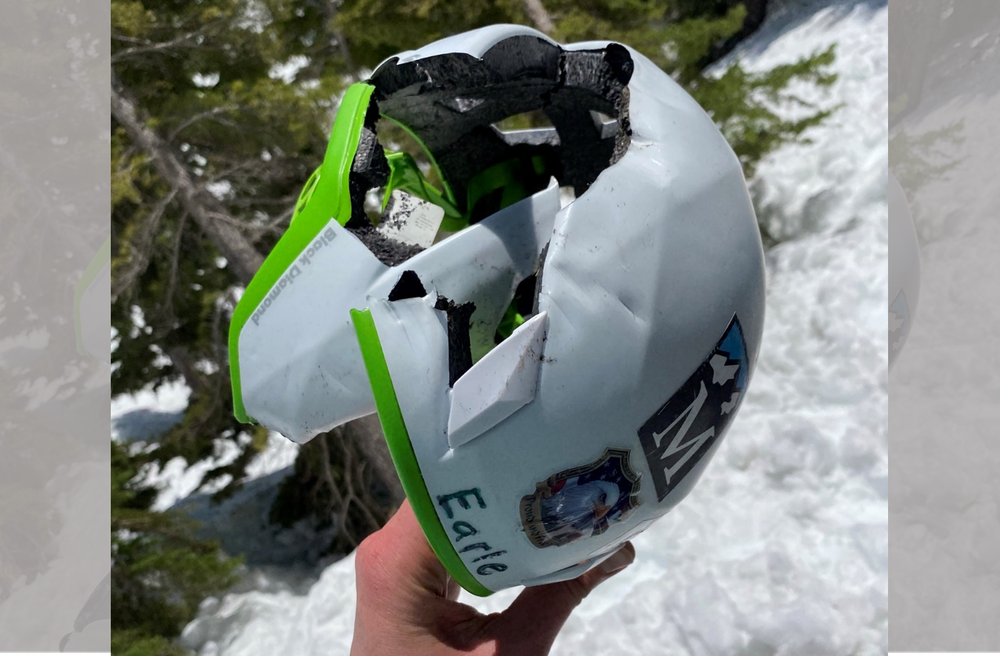
We make our way across a questionable snow bridge perched precariously near a waterfall of melting snowpack. Our team of three snow scrambling students and two course leaders move slowly, taking turns crossing the snow bridge one at a time. When the last person steps off the bridge, we share a collective sigh of relief that our group decision was a safe one. I’m grateful to have my helmet on and ice axe in hand.
The terrain is steep, and I’m working to remember and practice the techniques we learned in class. I switch the ice axe from hand to hand as we switchback up the slope toward our destination: Mount Snoqualmie. I'm mindful to always keep three points of contact with the snow. I keep one trekking pole in the other hand – I feel more comfortable with something in both hands, and appreciate the extra stability in the slippery snow. Occasionally one of my three-season boots slides out from under me on the snow, even though I’m carefully following the footstep trail ahead of me, sometimes kick stepping to help with footing.
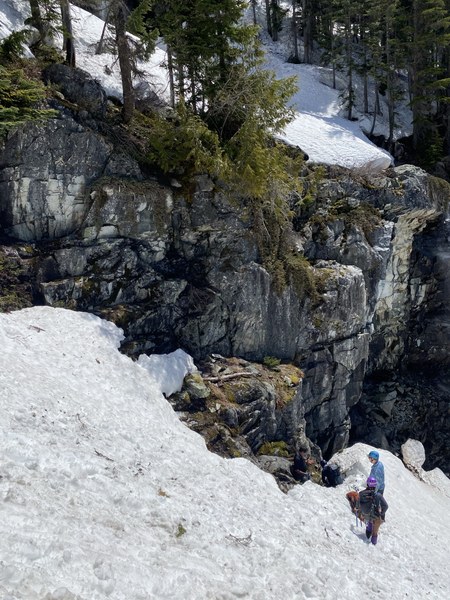
We have just cleared a ridge above a steep, rocky cliff and are well on our way toward the summit. Suddenly and unexpectedly, I go down and feel myself tumbling and sliding uncontrollably. The others see that I am in danger, and I can hear a leader yelling, “Arrest!”
I try to turn over on my stomach. Somehow I've already lost my ice axe and am working hard to use whatever means to stop myself. I try frantically to arrest with my gloved right hand and with the trekking pole I’m still clutching with my left. To no avail.
I crash into a tree, then go sailing over the 30-foot cliff, bumping and bruising my body on the way down. The whole incident seems to take only a few seconds. It happens so quickly, and before I can process what or how, before I can think about the best way to stop or the consequences of not stopping, it’s over.
Lying there motionless and in shock, members of my team quickly come to my aid. They comfort me, have me lie on a flat surface, and call Search & Rescue. A helicopter arrives, whisking me straight to Harborview Medical Center. After two nights in the hospital, I am released with a fractured neck, fractured wrist, and eight stitches. I’m just happy to be alive.
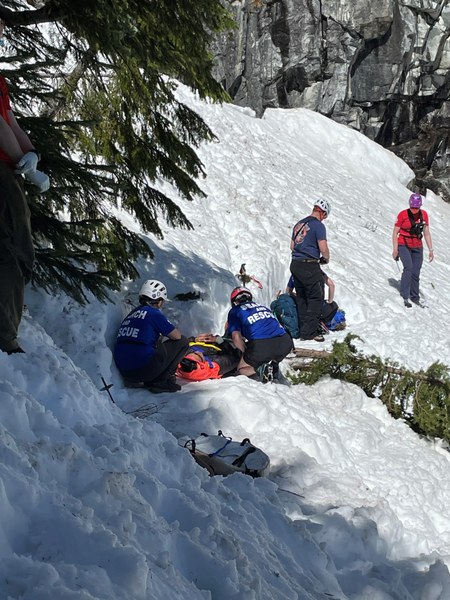
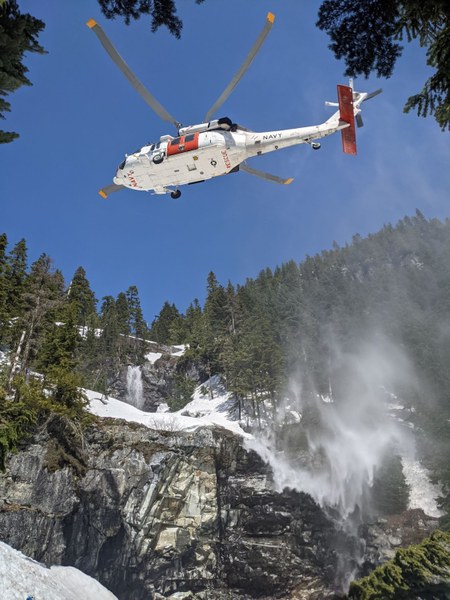
Lessons Learned
So, what did I do wrong? Could I have prevented this horrible accident? Is there anything I can do differently if this ever happened again? These questions continue to swirl in my head.
Everyone, including the doctors who treated me, say that I am lucky to be here today. I agree. It could have been a lot worse. Much of the credit probably goes to having had a helmet on. It definitely saved my life. Wear a helmet.
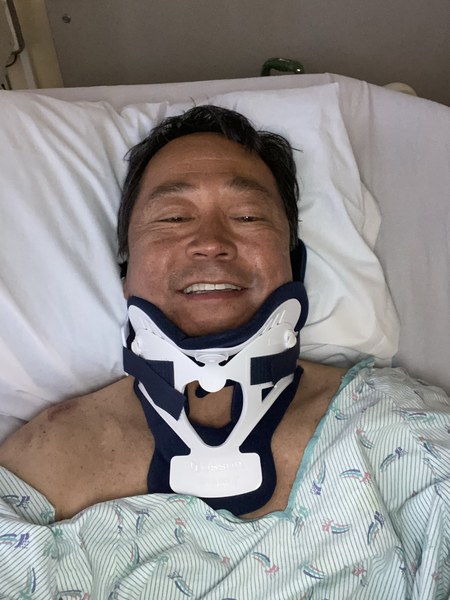
In retrospect, the fact that the traction of my boots gave way in the soft snow was probably an indication that I needed to be extra cautious. I could have been more careful about the stability of my footing, and, in turn I should have been more conscious about hanging on to my ice axe. We should think of those tools as a lifeline. This would have helped me to focus on the situational risk at hand and mentally prepare to take the proper actions with every step.
Ironically, this field trip represented the culmination of our scrambling training. We had learned various self-arrest and snow travel techniques. I had all the tools and training. It just took me by surprise that day and it happened so quickly. Accident prevention is about proper planning, preparation, and actions to avoid the mishap or taking intentional measures to mitigate the consequences. I was not mentally prepared and therefore, I failed to take preventative action.
I think accidents do happen and will continue to happen, and they often occur happens when we least expect it. I hope all Mountaineers will always make safety a priority and take any possible measures to prevent unfortunate, unexpected, and unintentional incidents like this. I encourage you to be proactive in your safety measures and work to be mentally prepared for the unforeseen dangers in the mountains. And wear your helmet. It may save your life too.
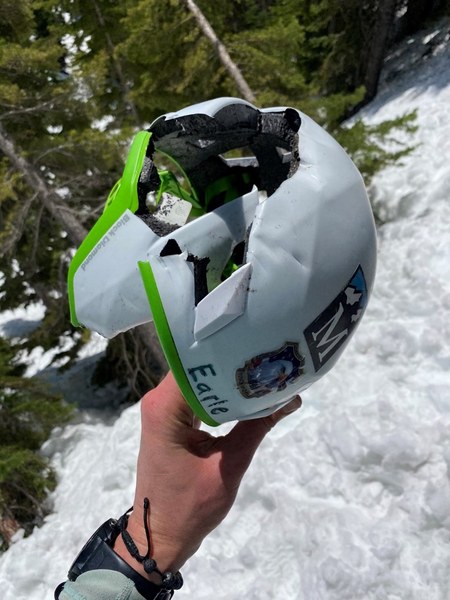
A word of thanks
While this whole incident sometimes seems like a big blur, bad dream, or dark cloud, there is a huge silver lining that shines brightly through. I am deeply grateful to my fellow Mountaineers, the Search and Rescue team, the helicopter crew, the hospital staff, family, co-workers, and friends that supported me and encouraged me during this whole ordeal. I was uplifted and overwhelmed by unselfish acts of kindness and generosity. I made new friends. I have greater awareness and respect for hiking safety. I have a renewed appreciation for The Mountaineers and am proud to be a member.
All photos courtesy of Earle Oda.
Add a comment
Log in to add comments.I'm glad you're okay, Earle! And thanks for sharing your story!
Yes, what Erik said!
So happy you’re ok, and thanks for sharing! What a traumatic experience. Helmets can, indeed, be lifesavers!
Earle, I'm happy to know you're okay! Wishing you a full and speedy recovery. Thanks for sharing your story!
Wow Earle! What a crazy misadventure...I'm so glad you are okay. Thanks for sharing your words of caution, wisdom, and silver-lining blessings.
First and foremost, Earle, I am so glad you made it through such an experience -- the helmet says it all. Second, I want to thank you for putting yourself in a vulnerable place and sharing your lessons learned for the benefit of others. When we tell rather than hide the stories of our mishaps, they become valuable teachable moments and remind us all to keep risk management top of mind. Heal strong!
I am so glad to hear that you are Okay. Thank you for sharing your story and the wisdom you learned. I hope to see you out in the mountains soon.
Earle!! I'm glad you are okay! Wishing you a speedy recovery!
Wow Earle - glad you are okay! Hope to see you back at Meany Lodge some time this winter! - Maud
What an incredible story. So glad you are okay Earle!
Thank you all so very much for your wonderful comments and more importantly for reading my story! Please share it as much as you can. Helping others will make it that much more meaningful.
I think my road to recover is complete. I summitted Mt. Baker this weekend, with my helmet on, clutching my ice axe tightly, and being careful about each step in the snow!
Good to hear that Earle is ok! Regarding lessons learned. I don't think this accident happens with the climber wearing crampons. Personally I will always be wearing my crampons on this kind of terrain. Also my crampon points are dull not sharp.
 Earle Oda
Earle Oda